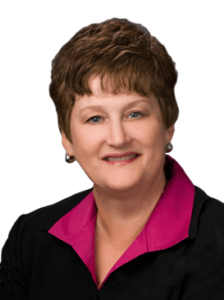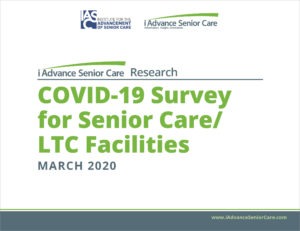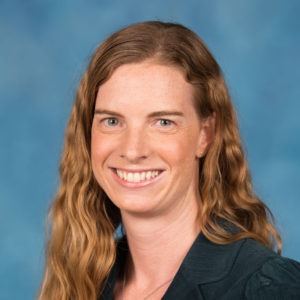Partnerships@Work: Airing out infection control
Germs, germs everywhere—but which germs can escape even the most stringent surface-disinfecting regimens, hand-washing protocols and housekeeping infection control initiatives? In today’s heightened awareness of antimicrobial stewardship, long-term care (LTC) facilities are looking deeper into prevention strategies to keep the infections commonly associated with skilled nursing facility (SNF) environments in check and to keep the “super bugs” from becoming super problems for resident care and facility operations.
As the CEO of Arbors of Hop Brook, a Manchester, Conn. campus that includes a 120-bed SNF and a 114-unit continuing care retirement community (CCRC), Paul Liistro decided to improve his community’s germ-warfare arsenal by scrutinizing the invisible—the air. “What we do very well—what everybody does very well—is cleaning surfaces,” Liistro says. “Anything that is reachable, whether it’s a carpet or a floor, a railing, a piece of furniture or a wall, we can get at all that. Things that we don’t do very well are the airborne infection controls. We had environmental filters running, but all we were really doing was funneling air.”
In the past, occasional illness outbreaks had caused Liistro to close down at least part of the campus to visitors more than once, especially during the virulent influenza season. Every closed day interrupts the clinical staff’s routines and the residents’ length-of-stay parameters, all of which means bottom-line dollars, he explains.
Liistro first met Chicago-based Novaerus at an LTC conference in late 2013 and, like many, he listened to the trade show representatives’ product pitch with a slightly cynical eye. “I said, ‘If you could show me the before-and-after data, I might believe that this thing works,’” Liistro remembers.
Why not just stick with the traditional housekeeping tasks? “Dust and other stirring particles just get trapped in the gases, and those clouds are always moving through the air,” says Brendan Sullivan, chief marketing officer at Novaerus, who worked directly with Liistro at his site. “As the humidity increases, you can actually work to reduce the path of pathogens traveling in the air.”
Even the most stringent, well-intentioned housekeeping tasks can thwart the purpose of infection control, Sullivan adds. “When you’re cleaning a room or changing the linens, you’re basically stirring up all those particles and bringing them up into the air. Then what?”
 Enter a plasma light technology that established its first use in computer display technology 30 years ago but has only recently been re-envisioned for use as an environment-based air-purifier. The system pulls the air across a plasma coil, which is energized by ionized gas, “scrubbing” any air the coil encounters from germ-based contaminants. The filter units used at Arbors of Hop Brook, barely the size of milk cartons, sit unobtrusively on shelves above head level.
Enter a plasma light technology that established its first use in computer display technology 30 years ago but has only recently been re-envisioned for use as an environment-based air-purifier. The system pulls the air across a plasma coil, which is energized by ionized gas, “scrubbing” any air the coil encounters from germ-based contaminants. The filter units used at Arbors of Hop Brook, barely the size of milk cartons, sit unobtrusively on shelves above head level.
In 2014, Liistro installed the Novaerus system at both the SNF and the CCRC, figuring he’d probably have to wait a year to see meaningful results. Not so, he reports. “This is the first year for both facilities [the SNF and the CCRC] that we haven’t closed down a portion of a building due to an outbreak,” Liistro says. “[A competing facility] right down the road from us may be closed due to a respiratory system outbreak, yet our system is barely registering anything [on airborne microbes],” Liistros says. “It keeps our length of stay consistent.”
The air-cleansing initiative had other benefits, some of them unexpected, Liistro adds. Just two or three months after installation, residents with a history of allergies experienced a reduction in their allergic symptoms, Liistro says. “Not only does [the system] kill bacteria, viruses and other germs, but it also destroys multiple organic compounds.” The other surprise? A distinct reduction in the odors often associated with skilled nursing settings, he adds.
Aligning the housekeeping staff to the new system was a positive workflow experience, Liistro reports. He’s now decided to offer his campus as a pilot site for Novaerus’ newer technology, including sensors that “will be able to capture a report and track what’s going on hour by hour in the building. Especially during our very busy times, it will identify what is going on in the air and what we should be doing—specifically what we should be doing around visitation hours with more people coming in with different conditions,” he says.
Liistro likens airborne infection control to a seatbelt. “It’s clearly the safest way to prevent airborne infections from being transmitted from one person to another through respiration, sneezing and coughing. Everyone and everything will become healthier because germs will be destroyed and won’t be allowed to spread,” he says. “That’s the way I see it for my buildings. I was interested not sheerly because of the antimicrobial aspect, but because it’s about keeping my buildings safe and free from infections.”
The system may seem like a “magic bullet,” but it all rests in realizing the value of the site-specific data, Sullivan says. “One of the key things that clients are looking for is getting their data and starting to track their infection logs, but then extending that data to their readmission rates.”
At the nitty-gritty financial level, hospital readmissions caused by infections hit SNFs hard financially every single time, Liistro says. “Let’s say a Medicare patient comes in and the average [daily] rate is $500. Then let’s say I’ll lose that $500 if that resident has to go back to a hospital because of an infection. So, in a way, I can start to pay myself back if I can prevent that person from going to the hospital.”
But better infection control is really about better resident health and keeping residents from the dangerous back-and-forth path of hospital readmissions, Liistro says. Showing residents and their families that his organization is on top of the latest technology is good for his campus’ reputation, too, he adds. “Soon we will be able to say, ‘There hasn’t been an outbreak in 18 months’ or ‘in 24 months,’ ” he says. “[Consumers] are allowed to view it as ‘Your recovery time will be safer here,’ because we are going out of our way to prevent infections from infiltrating the building, and this is how we’ve chosen to do it.’ ”

Pamela Tabar was editor-in-chief of I Advance Senior Care from 2013-2018. She has worked as a writer and editor for healthcare business media since 1998, including as News Editor of Healthcare Informatics. She has a master’s degree in journalism from Kent State University and a master’s degree in English from the University of York, England.
Related Articles
Topics: Articles , Clinical , Risk Management











